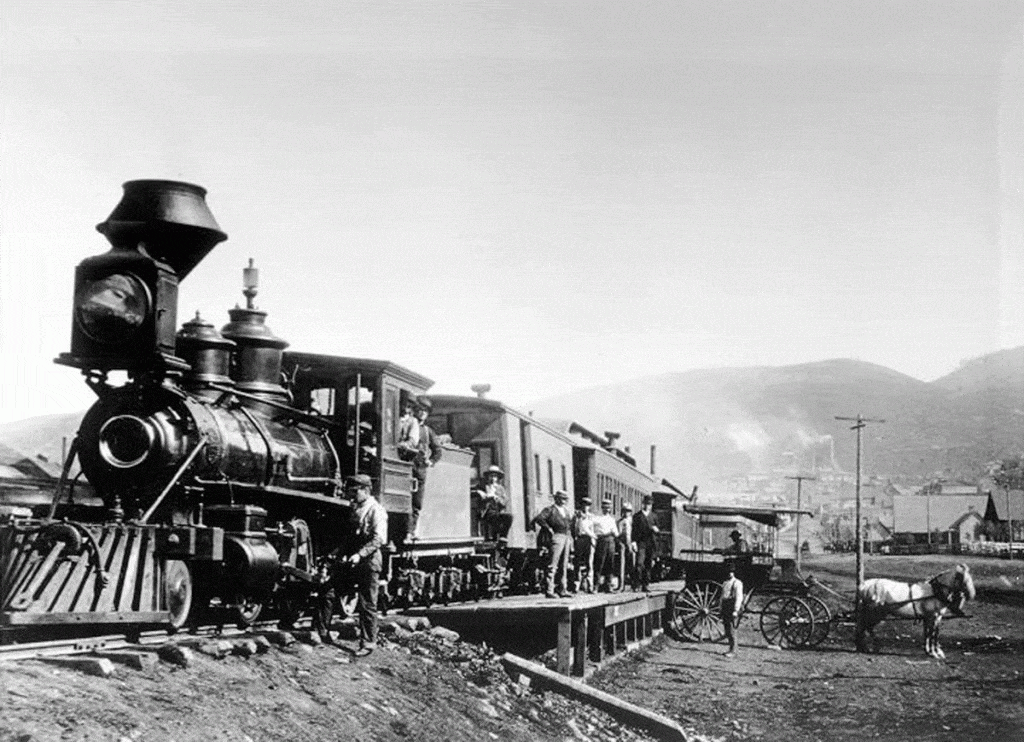The title of this article may remind readers of the movie “Field of Dreams” – a magical story starring Kevin Costner playing Ray Kinsellia, a farmer from Iowa. While walking in his cornfield Ray hears voices whispering “build it and he will come” referring to Shoeless Joe Jackson of Chicago Black Sox fame. Ray follows his heart, builds a baseball diamond in the cornfield and Joe and his teammates return for their redemption. The American Film Institute classifies Field of Dreams as a fantasy film. Its story is something that could happen “only in the movies.” But perhaps it has really happened.
“Build it and they will come” applies to the birth of Park City. The town owes its existence to the construction of the first Transcontinental Railroad. Before this event, Park City did not exist. This situation changed effective May 10, 1869 with the driving of the Golden Spike at Promontory UT. While an army of people contributed to this 19th century “moonshot” in the context of Park City we will discuss three of them – Abraham Lincoln, Brigham Young and Colonel Patrick E. Connor.
Before becoming the 16th President of the United States, Abraham Lincoln established himself as a brilliant railroad lawyer. In the late 1850s an important client was the Illinois Central Railroad, one of the nation’s largest railroads. Lincoln grasped the transformational potential of the iron horse. By the early 1850s discussions regarding the construction of a railroad to the west began in earnest. In 1853 Congress appropriated funds for a comprehensive survey from the Midwest to the Pacific Coast. The project took five years and identified five potential routes. One of the most promising was the “central route” from Omaha across Nebraska through Salt Lake City to Sacramento. However, any effort to make a decision proved impossible owing to the extreme partisan political environment.
The secession of the eleven slave-holding states and subsequent attack on Fort Sumter (April 12, 1861) resolved partisan impediments. Unburdened by the obstructionist Southern Legislators, Congress passed the Pacific Railroad Bill which Lincoln signed on July 1, 1862. Now, which route to select?
Relations between the Mormons and the Federal Government could best be described as “frosty” since conclusion of the Mormon War in 1850. With the outbreak of Civil War Brigham Young expressed neutrality concerning the conflict. This neutrality was open to misinterpretation concerning Mormon loyalty to the Union. The federal government was intolerant of separatist activity and mixed sympathies. To counter this Mormon “problem,” Colonel Patrick Connor and 2,500 troops were dispatched to Salt Lake with orders to protect the overland route and keep an eye on the Mormons.
Perhaps as a “Union” insurance policy the central route was selected for the first Transcontinental Railroad. Two private companies backed by the financial might of the federal government would construct this modern miracle. Between the Central Pacific and Union Pacific they would build a rail network exceeding 1,700 miles binding the north and west together. Thus was Park City’s fate set in motion. An exhibit on the Transcontinental Railroad opens in the Park City Museum’s Tozer Gallery on February 10. Stay tuned for part two on the Transcontinental Railroad and Park City on March 4th before we host a lecture on the railroad.

Credit: Park City Historical Society & Museum, Bea Kummer Collection